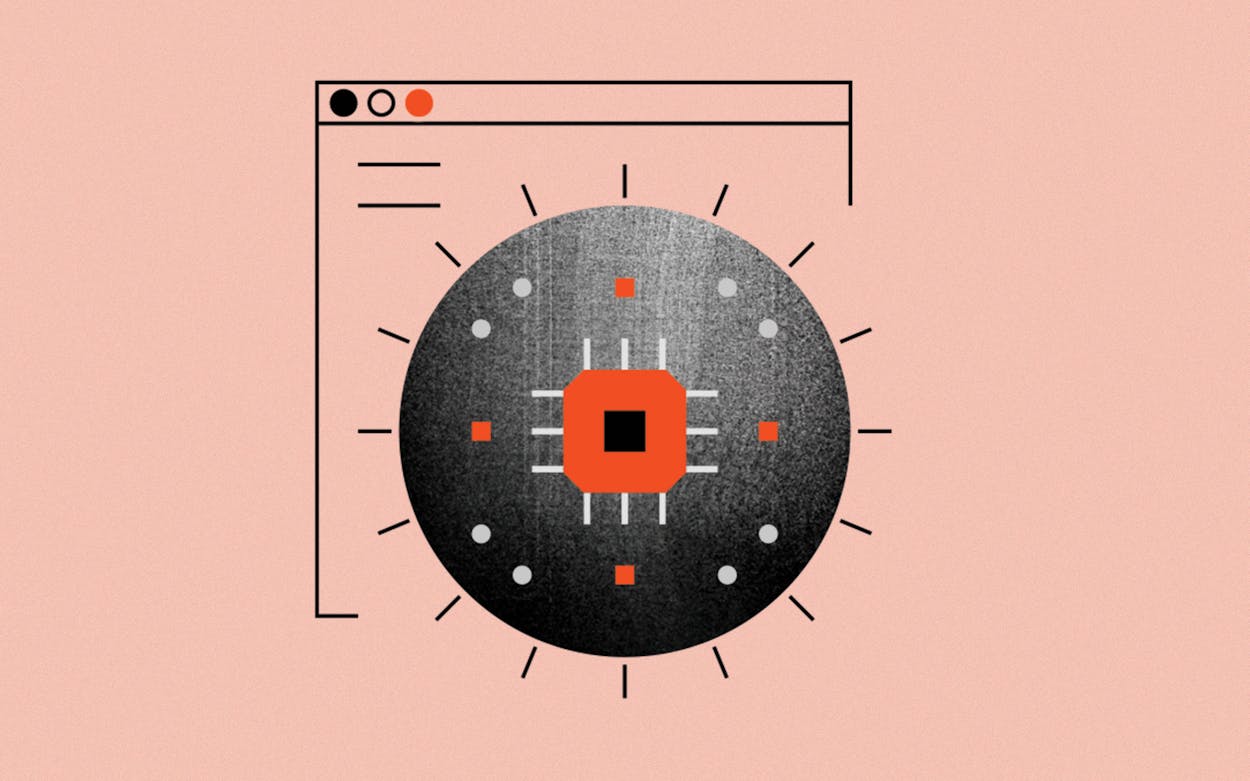Rolling down the hall, the most popular new staffer at Dallas’s Medical City Heart Hospital accepts a fist bump from a nurse before stopping into a supply room to pick up gauze and saline solution to bring to a patient’s room. Next comes a trip to the elevator, where the staffer, named Moxi, asks a doctor to push the button for the fourth floor. The doctor, who knows Moxi hasn’t yet mastered reading and button-pushing, smiles and obliges. Once off the elevator, Moxi travels to the correct room and drops the supplies in a bucket just outside the door. A passer-by offers a high five. Moxi turns to face the visitor, beeps pleasantly, and changes the shapes of its eyes from circles into hearts.
Moxi is a robot, the world’s first full-time automated nursing assistant, built by Austin-based Diligent Robotics. It handles the kind of menial tasks—replenishing supplies, running samples to the lab—that can greatly reduce the time nurses spend on direct patient care (by as much as 30 percent, according to Diligent). It was that bit of data that inspired Diligent cofounders Andrea Thomaz and Vivian Chu to develop Moxi back in 2016.
For Diligent, Medical City is its first official client, thanks to a two-year contract for a pair of Moxi robots that began last fall. (Moxi prototypes previously logged a total of 120 days in action across four Texas hospitals in a series of beta tests that began in 2018.) Moxi can be programmed to handle a daily routine as well as respond to on-demand needs when summoned via iPad. Its mechanical arm can reach for and pick up objects, and it has a lockbox for transporting sensitive materials. Sensors allow it to anticipate and avoid obstacles along crowded corridors, and its roughly human form and behavior, including a head that swivels to face people it interacts with, help make it a natural part of the hospital workflow. “If you’re just a trash can robot without a head, it’s really hard for anybody to tell what you’re doing and what you might do next,” explains Thomaz, who is a UT-Austin associate professor of engineering as well as Diligent’s CEO.
To be sure, robots have been available to hospitals for decades—highly specific surgical robots, for instance, or rudimentary automated vehicles—but artificial intelligence is now enabling the creation of interactive machines capable of more complex, dangerous, or varied tasks. When the COVID-19 pandemic hit earlier this year, the potential for such technology, and the speed of its adoption, took on new urgency.


In China, robots have delivered medicine and food to COVID-19 patients in isolation and taken their temperatures. In Italy, so-called tele-presence robots have allowed doctors to consult with infected patients at a safe distance. And San Antonio-based Xenex Disinfection Services has seen a worldwide surge in demand for its “germ-zapping” robots that use bursts of UVC light to eliminate pathogens—including the COVID-19 virus—from surfaces.
Nobody knows exactly how many medical workers nationwide have contracted COVID-19, let alone how many the disease has killed. Ohio has found that health care personnel account for sixteen percent of all its cases, but many other states, including Texas, don’t track cases by occupation. Whatever the number, it’s clear that those who work in hospitals during a pandemic put themselves at elevated risk. Bringing more automatons in to help could alleviate some of that risk, thus reducing infections and saving lives.
In the meantime, Medical City Health System has stayed focused on Moxi’s potential for increasing efficiency. Whether the robot gets introduced into the system’s other hospitals depends on how much time it saves the humans. “If we can eliminate the ten or fifteen minutes it requires for a nurse to run to the lab, so they can focus on the patient, that’s huge,” says Josh Kemph, Medical City’s chief operating officer.

Linda Harrington, a TCU nursing school faculty member who researches health care technology, argues that easing the burden of keeping up electronic health records would be of even greater help to nurses than reducing gofer-like tasks. Studies have shown that nurses now spend between 25 and 40 percent of their time inputting patient health information. Moxi is designed to integrate with electronic health records, but that capability won’t be deployed at Medical City until later this year at the earliest, pending reviews of patient privacy protections. Even then, Moxi’s purpose will be to review records and anticipate a nurse’s needs—like delivering a replacement catheter to a patient’s room before it’s even been requested—rather than helping with documentation.
Both Medical City and Diligent emphasize that they’re not out to replace nurses, only to help with specific tasks. But Thomaz doesn’t rule out the idea that robots could become more directly involved with patients, if that’s what her customers want. State health department projections estimate Texas will have about 60,000 fewer registered nurses than it needs by 2030, and robots could help to fill that gap. Indeed, in March Diligent raised $10 million from investors in order to ramp up production and deployment of more Moxis, which the company says will land in more hospitals before the end of the year.
“The status quo of nursing as it exists right now, I don’t think it has ten years,” says Harrington. “I’m not sure if it has five.”








